
Thirteen investigators were awarded grants in support of cancer research projects in the Spring 2021 cycle of the UCSF Resource Allocation Program (RAP). Funded by various agencies across UCSF, the awards span a range of topics from health equity to therapy resistance to developing new screening methods.
RAP is a campus-wide program that bi-annually facilitates intramural research funding opportunities and seeds high-quality, high-impact, timely research. The program offers many benefits for investigators and campus agencies, including a single application, a streamlined review process, and access to funding that has a typical funding rate of about 37 percent.
“As a previous recipient of a RAP Award, and now a reviewer for the RAP Program, I feel this funding mechanism is critically important for both early career and more senior researchers in that it supports the development of ideas that are innovative, creative, and may need seed funding to get off the ground. The diversity of applicants and research topics is amazing, and I learn so much each and every time I participate in a RAP grant review," said Michelle Melisko, MD, professor of medicine and co-chair of RAP's cancer review committee.
Read more about the recent awardees and their cancer research projects below.

Joaquin Anguera, PhD
Associate Professor, Dept. of Neurology, UCSF
Project: A Pilot Study of Assessing and Improving Cognition and Real-World Behavior in Pediatric Cancer Survivors
Award Mechanism: Pilot for Established Investigators in Basic and Clinical/Translational Sciences
Can you describe the focus of your project in a few sentences?
Sure can! The goal of this project is to measure attention and real-world behaviors (e.g., academic achievement, parent-report self-control) in pediatric cancer survivors, and then see if one of our custom, mobile, adaptive video games improves function in either (hopefully both!) domain. We have created a suite of tools that can be deployed on an array of mobile devices to better measure such functions, as well as a cognitive control intervention (ENGAGE) designed specifically for adolescents that we think will help improve underlying cognitive control difficulties.
What motivated you to pursue this particular project? What do you find most exciting about this research?
Dr. Courtney Gallen, soon-to-be former postdoc and soon-to-be research scientist at Neuroscape! We were chatting about how the ENGAGE technology would be so cool to use in this population for a number of reasons, and she really spearheaded our interests and efforts in partnering with Dr. Sabine Mueller and getting this grant together. I'm always excited to try and find new avenues to use our cognitive assessments & interventions, as I'm a huge proponent of getting developed tech out of the lab and into the hands of folks that might benefit from them. Learning who benefits from such approaches (as well as who does not!) is super interesting to me, and helps pave the way for truly more personalized and effective therapeutics.

Chemtai Mungo, MD, MPH, FACOG
Postdoctoral Fellow, Bixby Center for Global Reproductive Health, UCSF
Project: Prevalence and predictors of type-specific high-risk human papillomavirus (HPV) persistence following thermal ablation among HIV-positive women in a low-resource setting
Award Mechanism: Mentored Scientist Award Program in HIV/AIDS
Can you describe the focus of your project in a few sentences?
This project is focused on understanding a driving risk factor for development of cervical cancer in low-income countries. This study will look at the prevalence of high-risk human papillomavirus (HPV) infection – the agent that causes cervical cancer – among women living with HIV who have been treated for cervical precancer in western Kenya. We will investigate the factors that lead certain women to not clear HPV infection following treatment – and whether specific types of HPV are particularly hard to clear, for which new interventions would be needed. Persistent HPV infection following treatment is the leading risk factor for developing cervical cancer among women with HIV.
What motivated you to pursue this particular project? What do you find most exciting about this research?
I am passionate about using clinical research to pursue equity in global women’s health. Cervical cancer is a disease of great inequity – 9 out of 10 women who die from cervical cancer live in low- and middle-income countries (LMICs). Studies like these will contribute to the ongoing efforts to develop more effective cervical cancer prevention tools – through better screening, better risk stratification, improved treatment – to turn the tide of cervical cancer deaths in LMICs.
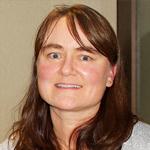
Hilde Schjerven, PhD
Associate Professor, Dept. of Laboratory Medicine, UCSF
Project: Investigation of leukemia-microenvironment interaction and therapy resistance
Award Mechanism: Pilot for Junior Investigators in Basic and Clinical/Translational Sciences

Mekhail Anwar, MD, PhD
Associate Professor, Dept. of Radiation Oncology, UCSF
Project: Implantable Microdosimeters for Targeted Alpha Particle Theranostics
Award Mechanism: Pilot for Established Investigators in Basic and Clinical/Translational Sciences
Can you describe the focus of your project in a few sentences?
Theranostics are a (re)emerging class of drugs that combined a targeted molecular agent that hones to the tumor cell with a radionuclide that damages the cell's DNA. The project uses a millimeter-scale implantable microdosimeter -- capable of single particle sensitivity -- implanted within the tumor to monitor, in real time. The sensor is made from computer chip technology, which enables bulk fabrication, cheaply, and solves one of the critical problems in using this promising class of drugs -- how do you dose them properly. Each patient is unique -- their cancer will uptake the drug differently than another patient, and their body will distribute the drug differently. As we increase the radiation dose delivered with these drugs, it is critical that we personalize the dosing for each patient. Currently there is no method to monitor the dose distribution in real time to monitor and adjust how the therapy is given. This limits the dose we can safely deliver; however if we can significantly increase the dose to the tumor, we can improve survival, and potentially cure more patients. The sensor can monitor the dose delivered in real time to multiple areas in the patient, including multiple tumor sites. This platform will open the door to even more powerful theranostics, using alpha particle therapies, safely and effectively.
What motivated you to pursue this particular project? What do you find most exciting about this research?
There are a few areas I think are very promising for significantly improving survival in cancer. Theranostics is one of them. Conventional theranostics, using the beta-emitter Lutecium 177, have shown a clinical benefit for several cancers in recent clinical trials. But as a radiation oncologist, I see the potential of alpha particle therapy which can deliver several hundred times the energy per cell to radically change the field. These doses may have the ability to destroy the tumors they bind to, but as with all therapies, we must be wary of toxicity, and this project is dedicated to the safe, and personalized delivery of alpha particle therapy so we can open this avenue of promising therapy to a large number of patients. I am very excited by the idea of melding a completely novel technology with an emerging class of therapeutics to unlock its potential for curative therapy in hard to treat cancers.
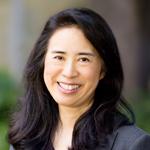
Maria Wei, MD, PhD
Professor, Dept. of Dermatology, UCSF
Project: Developing a molecular classifier for non-invasive screening for skin cancer
Award Mechanism: Pilot for Established Investigators in Basic and Clinical/Translational Sciences
Can you describe the focus of your project in a few sentences?
This project aims to develop a non-invasive, molecular method to screen for and detect skin cancer, with the goal of developing an inexpensive, readily available test to increase access to dermatologic care for underserved populations, and to decrease the number of biopsies performed on benign lesions.
What motivated you to pursue this particular project? What do you find most exciting about this research?
I noticed in my Melanoma Clinic that patients with skin of color were coming in with thicker and more advanced melanomas. My research group investigated this observation in more detail, and recently published a paper on the impact of social determinants of health on melanoma outcomes, which reported that barriers to access to dermatological care adversely affects patients' melanoma outcomes. We have been interested in leveraging technology to address this access problem, and I find the idea developing a simple, inexpensive method to assist in screening for skin cancer exciting. I'm happy to report that our preliminary results look promising.
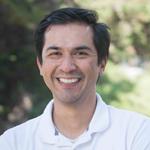
Emilio Ramos, MD, PhD
Clinical Fellow, Dept. of Pathology, UCSF
Project: Targeting the Cell Surface of Chronic Myeloid Leukemia in Blast Phase (CML-BP)
Award Mechanism: Under-represented Faculty in Clinical and Translational Research

Sam Brondfield, MD, MAEd
Assistant Clinical Professor, Div. of Hematology/Oncology, Dept. of Medicine, UCSF
Project: Immune Related Adverse Events Requiring Inpatient Admission: A Major Roadblock in the Treatment of Cancer with Immune Checkpoint Inhibitors
Award Mechanism: Pilot for Junior Investigators in Basic and Clinical/Translational Sciences
Can you describe the focus of your project in a few sentences?
Our project will start as a retrospective study investigating the risk factors for developing immune-related adverse events leading to hospitalization in patients receiving checkpoint inhibitors. The next phase of the project will prospectively build a cohort of patients hospitalized with immune-related adverse events and will include the collection of specimens for biobanking. Finally, we plan to augment our inpatient consultation services for patients hospitalized with immune-related adverse events by capitalizing on interdisciplinary expertise and collaboration.
What motivated you to pursue this particular project? What do you find most exciting about this research?
As a hospital-based oncologist, I care for patients hospitalized with severe immune-related adverse events. Beyond first-line steroids, management of many of these conditions is not supported by a strong evidence base. It is the severity of these conditions, and the clinical uncertainty around their management, that spurred my interest in this area of research. With greater understanding and improved interdisciplinary collaboration, management of these conditions will become more clear.
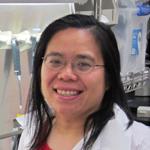
Victoria Wang, MD, PhD
Assistant Professor, Div. of Hematology/Oncology, Dept. of Medicine, UCSF
Project: Exploring the Transcriptomic and Proteomic Landscape of AML Using Spatial Profiling
Funding Mechanism: Doris Duke Charitable Foundation Fund to Retain Clinical Scientists
Can you describe the focus of your project in a few sentences?
The RAP project was a continuation of an investigator-initiated early phase clinical trial I started as a fellow. This project has been long-time in the making but the clinical results and correlatives using single cell analysis to identify biomarkers will be published in Blood Cancer Discovery this week, which is extremely gratifying to see. One of the limitations of the study is the lack of relative spatial information regarding gene and protein expression to tumor architecture. In the RAP project, I propose leveraging our longitudinally collected bone marrow specimens with new technology that can identify spatial RNA and protein expression at near single cell resolution to better understand the biology of AML and identify biomarkers of response.
What motivated you to pursue this particular project? What do you find most exciting about this research?
It is extremely rewarding to see the project coming together from inception to completion, which took many, many years. It is also exciting to be able to apply some of these new single cell technologies to answer biological questions that could directly benefit patient outcomes.

Sorbarikor Piawah, MD, MPH
Assistant Professor, Div. of Hematology/Oncology, Dept. of Medicine, UCSF
Project: Exploring the Role of Diet, Lifestyle, and the Gut Microbiome in Young Onset Colorectal Cancer among Latinx Populations
Award Mechanism: Global Cancer Pilot Award

Jeroen Jansen, PhD
Associate Professor, Dept. of Clinical Pharmacy, UCSF
Project: Health Equity Impact Analysis of New Health Technologies – A Pilot Study
Award Mechanism: Pilot for Established Investigators in Basic and Clinical/Translational Sciences
Can you describe the focus of your project in a few sentences?
Health technology assessment is the formal assessment of the clinical effectiveness, cost-effectiveness, and budget impact of a health technology (e.g. a drug, test, or device) to help decision-makers with creating policies to ensure appropriate and efficient use to achieve optimal health outcomes. Disparities in health outcomes are an important concern for many conditions. However, the typical analyses to inform health technology assessment do not provide information to what extent a new technology is likely to reduce or increase health inequalities. In principle, we can use a decision-analytic modeling approach where multiple sources of complementary evidence are integrated to estimate the impact of the new health technology on disparities in outcomes. However, it is unclear how to perform such an analysis with the relatively sparse evidence available for a new intervention at the time of market introduction. The aims of the study are to: 1) assess how the health equity impact can be estimated for a new health technology—including evidence needs, data availability, and analytical approach along with required assumptions—through a cancer case study; and 2) develop a generalizable blueprint outlining how available evidence can be used to perform a model-based estimation of the health equity impact of new health technologies.
What motivated you to pursue this particular project? What do you find most exciting about this research?
My expertise is evidence synthesis and health economic simulation modeling to understand the value of healthcare interventions, with a specific focus on comparative – and cost-effectiveness evaluations. However, for a complete picture of the value of a health technology, I think we should be looking at its impact on inequality in outcomes as well. Although there is a framework to facilitate such an evaluation, called distributional cost-effectiveness analysis, the major question is about the feasibility given the available data. Clinical evidence that is generated as part of the development of a new healthcare intervention is typically not sufficient and needs to be combined with external evidence in an evidence synthesis or simulation model. However, the optimal approach to use and integrate the available data to perform health equity impact evaluations is unclear. As far as I know, this project is the first to look into this challenge. I am most excited about the potential of the findings of this pilot project as it provides the foundation and guidance for future applied research studies aiming to evaluate the health equity impact of novel cancer therapies.
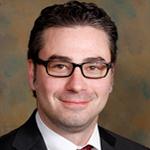
Michael Evans, PhD
Associate Professor, Dept. of Radiology, UCSF
Project: A State-of-the-Art HPLC System for Radiopharmaceutical Development and Translation
Award Mechanism: Shared Technology Awards

David Solomon, MD, PhD
Assistant Professor, Dept. of Pathology, UCSF
Project: Epigenetic-based classification of kidney cancer
Award Mechanism: Pilot for Junior Investigators in Basic and Clinical/Translational Sciences
Can you describe the focus of your project in a few sentences?
The current diagnostic classification system of kidney cancer based on microscopic features including color of the tumor cell cytoplasm and size of the nucleolus is archaic and imprecise. This study aims to use genome-wide DNA methylation profiling to advance the diagnostic accuracy and subtyping of kidney neoplasia, which will enable more robust prognostication, better patient stratification for clinical trials, and more reliable assignment of targeted therapies aimed at specific kidney cancer subtypes.
What motivated you to pursue this particular project? What do you find most exciting about this research?
I strongly believe that genome-wide DNA methylation profiling is going to revolutionize the practice of diagnostic pathology over the next decade. My hope is that successful completion of the proposed studies will provide further impetus for support from UCSF Health leadership to be able to clinically implement DNA methylation profiling at our medical center to benefit our cancer patients, while simultaneously advancing our Urologic Oncology program and providing the foundation for future clinical trials and program project grants at UCSF that incorporate epigenomic-based classification of cancer.

Michael Ohliger, MD, PhD
Associate Professor, Dept. of Radiology & Biomedical Imaging, UCSF
Project: Deuterium volume coil for preclinical 9.4T MRI
Award Mechanism: Shared Technology Awards
About RAP
The mission of the UCSF Resource Allocation Program (RAP) is to make applying for intramural research funding efficient and accessible for all faculty and non-faculty applicants, and to coordinate and minimize the redundancy of the application and review process among the funding agencies. The Fall 2021 RAP application cycle opens on Monday, August 30th with applications due on September 27th -- mark your calendars!